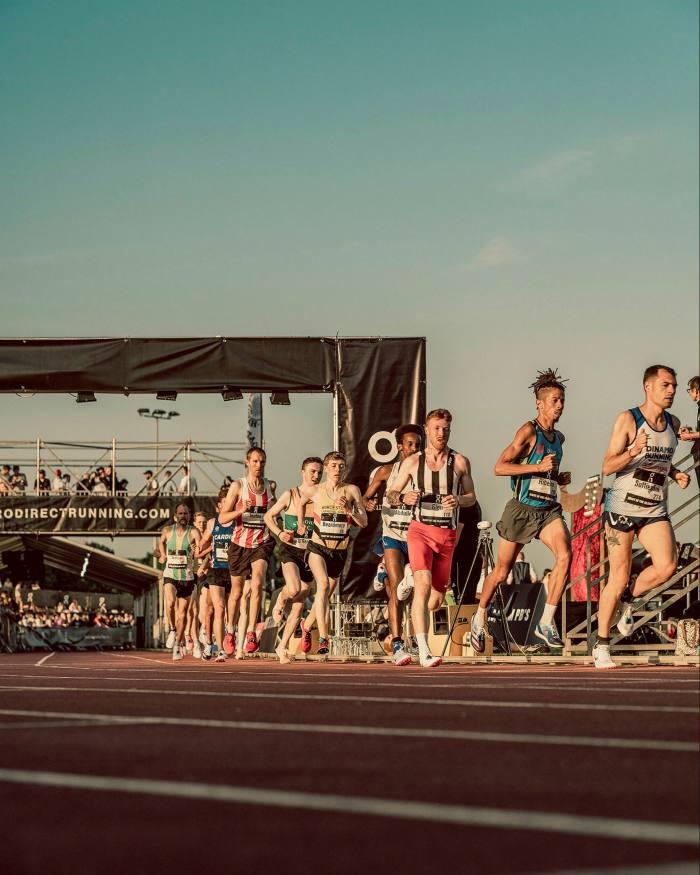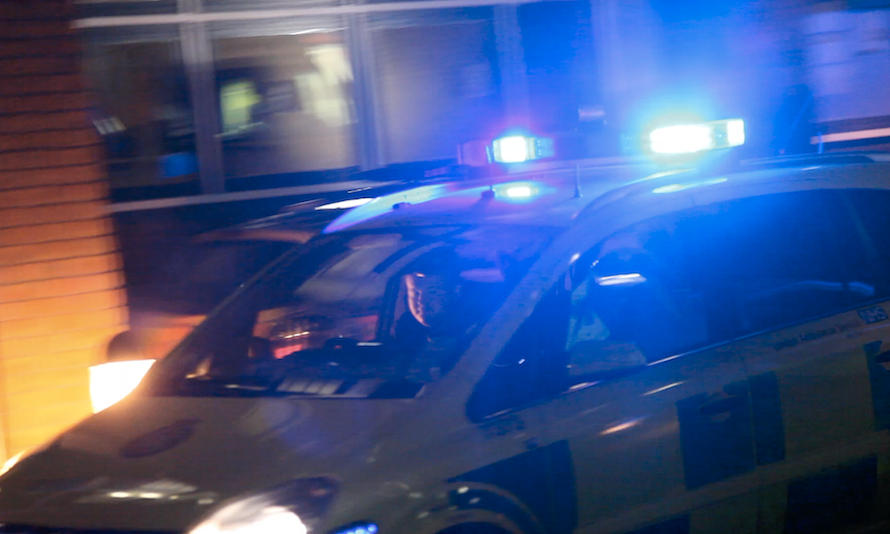This article is part of a guide to London from FT Globetrotter
In December 1909, Britain’s Charles Gardiner and Italy’s Dorando Pietri ran the first indoor marathon at London’s Royal Albert Hall. In front of a 2,000-strong crowd, the two athletes ran 524 laps of the arena, accompanied by music from a military band and an Italian tenor.
In hindsight, the event was a high point for running as a spectacle. In the century since, elite events have opted for less glamour and more function. And though recreational running has boomed in the past decade, crowds and participation in athletics have dwindled.
The first British indoor marathon, held at London’s Royal Albert Hall in 1909 © Royal Albert Hall
Now, a handful of events across London and the south-east of England are hoping to reinvigorate interest in track running, starting with what has long been seen as its least glamorous race — the 10,000m — by offering athletes and spectators a festival-like atmosphere once again.
“For nearly 100 years, we’ve kept to a very traditional, standardised approach for track events where you keep spectators well away from the action,” says race director Ben Pochee. “Everyone sits and claps politely [in the stand] and there is this disjointedness between that and the emotional effort of the athlete.”

A competitor at this year’s Night of the 10,000m PBs

The event is helping to revive interest in 10,000m racing © Jerry Sun/Curated for Runners (2)
Pochee organises the volunteer-run Night of the 10,000m PBs held every summer at Parliament Hill athletics track on London’s Hampstead Heath. It was founded in 2013 to give British runners a top-class event where they could hope to run qualifying times for European and World Championships. Pochee says he had grown tired of 10,000m races being the “ugly duckling” of athletics events. So low was the perceived interest in it that it was often dropped from athletics meets completely. When races where held, “it would be put on at the beginning of the programme before anyone’s even there”, he says.
For most people, running 25 laps of a 400m track sounds like a punishment. The only thing worse, some might suggest, is watching someone else do it. Even if they are quick, it is likely to take at least 30 minutes and the chances of a photo finish are virtually nil.
 The Night of the 10,000m PBs includes eight 10,000m and two mile races © Jerry Sun/Curated for Runners
The Night of the 10,000m PBs includes eight 10,000m and two mile races © Jerry Sun/Curated for Runners
Pochee’s innovation was to bring the spectators as close to the action as possible. Parliament Hill is a low-key, municipal-run facility with no seating, so at Night of the 10,000m PBs the crowd stands along the track. A temporary bridge means spectators can also cross the track to watch from the infield, while beer tents cover the home straight and back straight, creating a raucous atmosphere for the runners every time they loop round.
When I attended this year’s race with 5,000 other spectators on a hot Saturday in May, it felt more like a carnival than a running meet. Children scrambled up and down a temporary climbing wall and circus acts entertained the crowd between races. On the back straight, a DJ banged out jazz-infused Afrobeat, while supporters drunk Night of the 10,000m-branded beer as flame-throwers shot warming bursts of fire into the evening sky.

Athlete Kirsty Walker at Night of the 10,000m PBs

With its festival-like atmosphere, the free north London event drew 5,000 spectators this year © Jerry Sun/Curated for Runners (2)
The free event has expanded rapidly, from just 150 spectators in 2013 to thousands — and now attracts major sponsors, including for 2022 the Swiss running brand On. This year’s event stretched to eight 10,000m races and two Nike-sponsored mile races. It was far from boring: each race built gradually, loop after mesmerising loop, to an often thrilling climax. Pochee likes to tell people that the 10,000m is a like great classic novel, “with beginnings, with ups and downs and then a huge crescendo at the end”.
“There’s no other race that comes close,” says Ross Braden, a 28-year-old amateur who finished second in one race with a time of 30 minutes and four seconds. “On the final straight, it was so loud I couldn’t even hear if the guy behind me was catching up.”

Runner Paul Graham after one of the men’s races at Night of the 10,000m PBs

‘There’s no other race that comes close,’ says runner Ross Braden (above) of Night of the 10,000m PBs. ‘It was so loud I couldn’t even hear if the guy behind me was catching up’ © Jerry Sun/Curated for Runners (2)
One of the quirks of British running is that there are very few professional athletes, and it is a network of local running clubs that provides the backbone of the UK’s athletics system. Pochee, a member of north London’s Highgate Harriers, which was founded in 1879, estimates that around 99 per cent of British track races are volunteer-run, and inexpensive or free to compete in or watch.
Cities with the FT

FT Globetrotter, our insider guides to some of the world’s greatest cities, offers expert advice on eating and drinking, exercise, art and culture — and much more
Find us in London, Tokyo, New York, Paris, Rome, Frankfurt, Singapore, Hong Kong and Miami
These include other 10,000m-focused events such as FastFriday in Walthamstow, the Essex 10,000m championships in Chelmsford (taking place on July 27) and the Ladywell 10,000 in south-east London in August, which costs £13 to enter and is open to anyone able to run the distance in under 55 minutes.
Part of the charm of these events is the opportunity for amateur runners to rub shoulders with some of the best in the world. At this year’s Night of the 10,000m PBs, the men’s elite race was won by the European championships bronze medallist from Italy, Yemaneberhan Crippa, who seemed to accelerate with every lap and finished in 27 minutes and 16 seconds, just one minute outside the world record.

Italy’s Yemaneberhan Crippa won the Night of the 10,000m PBs men’s elite race © Jerry Sun/Curated for Runners
“That’s a world-class time that’s won Olympic gold [medals], yet it’s done on a council track in north London that is accessible to everyone,” says Pochee, who hopes that bringing such performances to public venues can inspire the next generation of runners.
“We’ve pushed at the edges of the traditional model of how athletics is presented,” he adds. “When you take the shackles off and find ways to give spectators that freedom, it makes it so much more interesting.”
10,000m track races in and around London
Night of the 10,000m PBs is one of a small number of track events across London and the south-east of England encouraging runners to tackle 25 laps.
Essex County Championships, Chelmsford, Essex
A more traditional club-run track meet, the Essex 10,000m championships is organised by the Essex Athletics Association. The next event is on July 27.
Ladywell 10,000, Lewisham, south-east London
Held every year at the Ladywell Arena. The next event is on August 21 and includes six 10,000m races at paces ranging from sub 55 minutes to sub 32 minutes, with the addition this year of two 100m races. The organisers promise “food, cake, music, beer and cheer” for runners and spectators.
FastFriday, Walthamstow, east London
Based at Walthamstow athletics track in east London, FastFriday offers five 10,000m races, with trackside bars and street food. A good option for quick runners who are not quite quick enough to qualify for Night of the 10,000m PBs. Qualifying times: men, sub 38m30s; women, sub 42m. This year’s event was held in June.
https://www.ft.com/content/91bf0325-84e7-4bf5-b0ad-f8021fce3ec6




